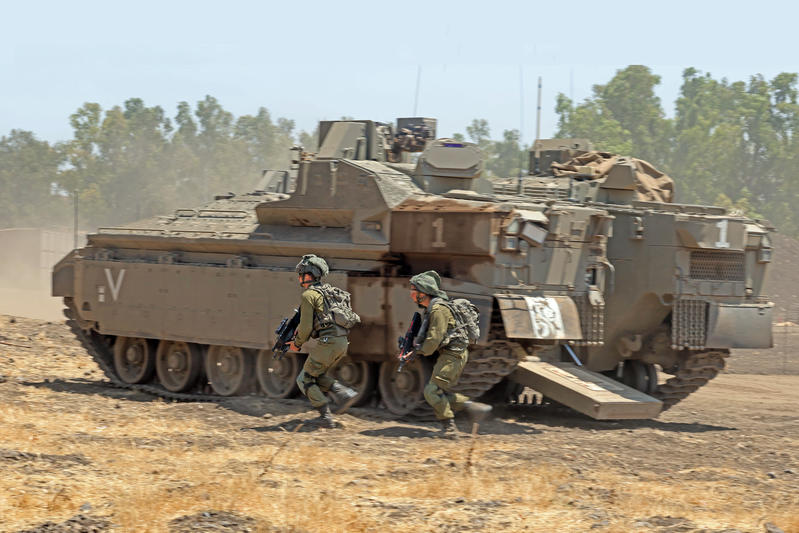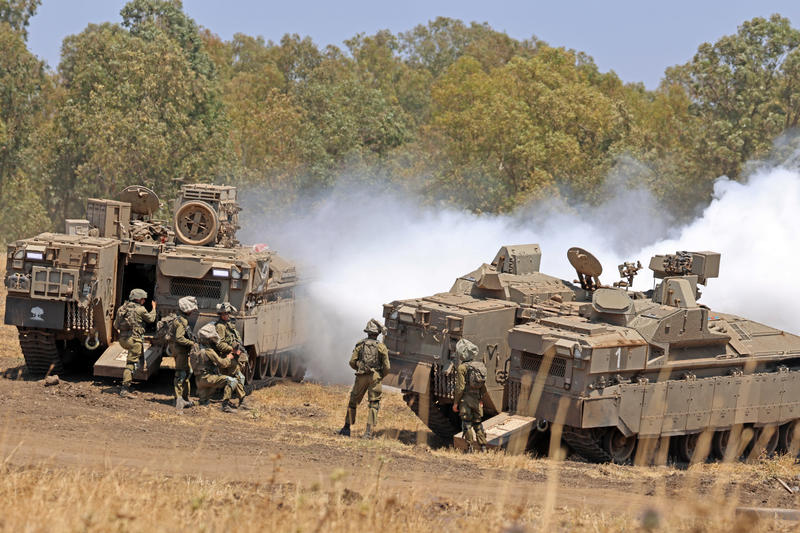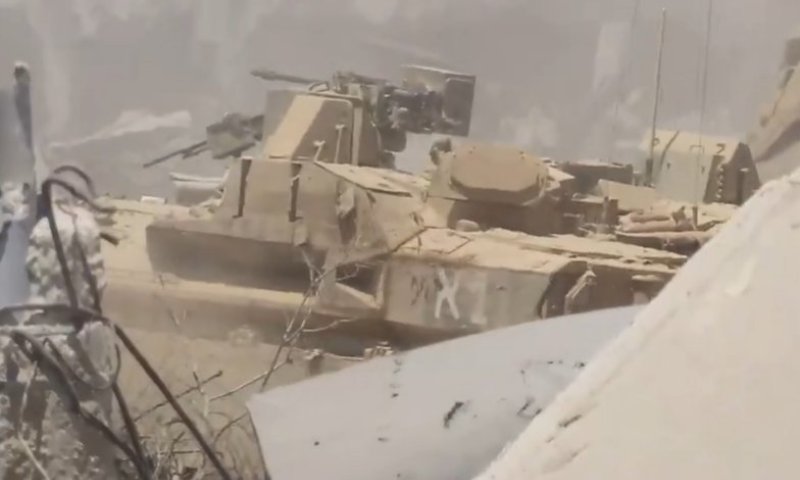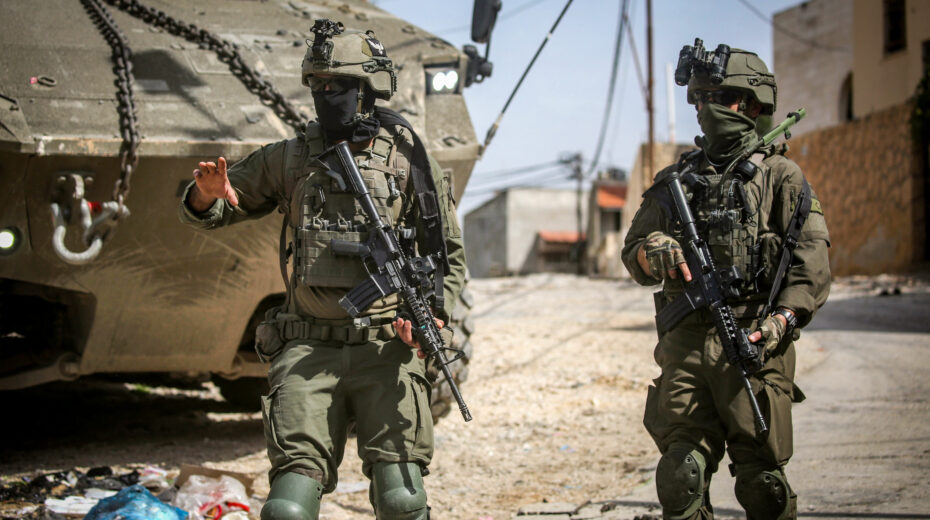What could have been one of the deadliest incidents of the war was narrowly avoided last month in Gaza, when a faulty air conditioner inside an IDF Namer armored personnel carrier (APC) forced soldiers to open its top hatch—leaving them exposed to an approaching Hamas attack.
On July 26, at the height of a severe heat wave with temperatures soaring to 35 °C (95 °F), the Namer’s cooling system failed. Inside the sealed vehicle, heat climbed to nearly 60 °C (140 °F). Struggling to breathe in their heavy vests and helmets, the soldiers opened the top hatch for relief.
Hamas fighters quickly spotted the vulnerable vehicle. Video released by the group shows armed militants rushing toward the exposed Namer. One climbed on top, planted an explosive device, and escaped. In what soldiers described as “a miracle,” the device malfunctioned, sparing the 12 crew members inside.

A Namer APC takes part in an army exercies of the 118 Armored Division Unit, in the Golan Heights. June 22, 2023. Photo by Ofer Zidon/FLASH90
A retired senior officer told Israel Hayom that the situation was alarmingly similar to past deadly incidents involving IDF armor: “It was a miracle from heaven. Twelve lives were saved. A commander told me: ‘You simply cannot stay inside.’ This was exactly like the Puma incident—we nearly had another tragedy.”
The officer stressed that such risks are not rare. Years of heavy use and recurring air-conditioning failures in IDF armored vehicles often force soldiers to sacrifice protection for air.
“Every summer we warn parents not to leave babies inside closed cars. But our soldiers sit inside sealed APCs with broken cooling systems, cooking in 30-degree heat that feels twice as high inside. They have no choice but to open the hatch. Imagine sitting in full combat gear with no air circulation.”

The Namer has been one of the IDF’s most important weapons on the dense urban battlefields of Gaza. Seen here during exercises on the Golan Heights. Photo by Ofer Zidon/FLASH90
The Namer fleet, along with Merkava tanks and Eitan APCs, has been heavily deployed since the start of the Swords of Iron War, putting unprecedented strain on vehicles and their systems.
In response, the IDF Spokesperson’s Unit confirmed that occasional malfunctions do occur, especially in extreme heat and dusty combat environments, but insisted that all vehicles undergo frequent inspection and maintenance.
“No unresolved systemic issue is known,” the IDF said. “All faults are repaired in real time. Additional cooling systems exist in every battalion, and when needed, we cooperate with civilian companies to supply replacements. Technicians are on constant standby, and malfunctioning systems are repaired quickly in civilian industry.”
While the official line stresses readiness, the near-tragedy highlights a stark reality: soldiers face not only enemy fire but also the crushing summer heat inside their own armor. For the twelve who walked away from the July 26 incident, survival came down to a stroke of luck—and a faulty bomb. Or was it a protective hand from above?

Israel just approved a large investment in producing more Namer APCs as well as Merkava Mk. 4 tanks. Photo: Ministry of Defense
Factbox: The Namer APC
- Name: “Namer” (Hebrew for “leopard”)
- Type: Heavy armored personnel carrier, based on Merkava tank chassis
- Crew capacity: 3 crew + 9 soldiers
- Armor: Among the heaviest-protected APCs in the world, resistant to anti-tank weapons
- Features: Advanced active defense system, modular armor, air-conditioning for extreme heat
- Operational role: Designed to keep infantry safe in high-intensity combat zones
- Combat use: Extensively deployed in Gaza since October 2023, logging hundreds of thousands of kilometers under fire
Want more news from Israel?
Click Here to sign up for our FREE daily email updates














